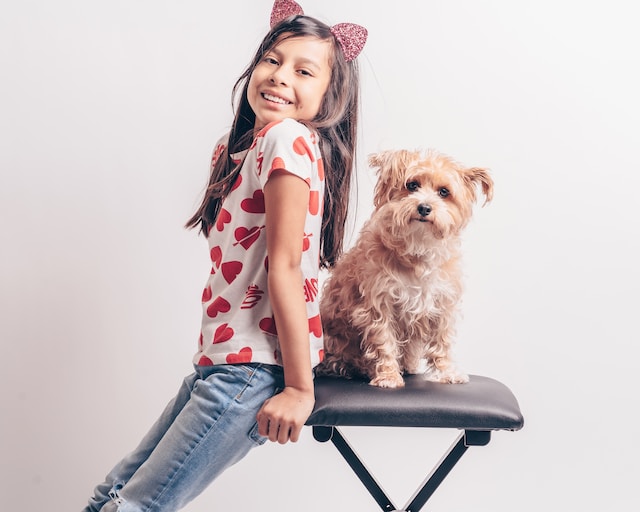
Did you know that having a pet can also play a significant role in helping children develop emotional intelligence?
Emotional intelligence, often referred to as EQ, is the ability to recognize, understand, and manage one’s own emotions and those of others. It enables kids to recognize and understand the emotions of others. When children can empathize with the feelings of their friends, family members, and classmates, they are more likely to build positive relationships and offer support when needed.
In this post, we’re going to explore how pets can positively influence a child’s emotional development.
Empathy and Compassion
One of the primary ways pets help children develop emotional intelligence is by fostering empathy and compassion.
When kids interact with their pets, they learn to recognize and respond to the animal’s emotions and needs. This helps them develop a sense of empathy, as they understand that their pets can feel happy, sad, or scared, just like humans.
Children often become more attuned to the non-verbal cues their pets give, such as wagging tails or purring, and they learn to interpret these signals correctly.
Moreover, caring for a pet requires compassion.
Feeding, grooming, and taking care of a pet’s needs teach children to be responsible and considerate of others, even if those others happen to be furry or feathered.
Emotional Expression and Communication
Pets provide a non-judgmental audience for children to express their emotions freely. Kids often talk to their pets, sharing their thoughts, feelings, and secrets.
Furthermore, pets can serve as a bridge for communication in families. Discussing their pet’s behavior and needs can encourage children to open up to their parents and siblings, leading to better communication within the family.
Stress Reduction

Pets can be a source of comfort and stress relief for children. Spending time with a beloved pet has been shown to reduce stress and anxiety levels. As a child cuddles with their pet or plays with them, their body releases oxytocin, a hormone that promotes bonding and reduces stress.
This experience helps children learn to manage their own emotions and find comfort in times of distress, an essential aspect of emotional intelligence.
Responsibility and Routine
Caring for a pet comes with a set of responsibilities, including feeding, grooming, and cleaning up after them. These tasks instill a sense of routine and discipline in children, teaching them about the importance of consistency and reliability.
This routine helps children understand that their actions have consequences and that they must fulfill their commitments, fostering emotional maturity and responsibility.
Coping with Loss and Grief
Unfortunately, pets have a shorter lifespan than humans, and the loss of a beloved pet can be a child’s first encounter with death and grief. While this experience can be painful, it provides an opportunity for children to develop emotional intelligence.
It allows them to navigate complex emotions such as sadness, anger, and acceptance.
Final Thoughts
Pets are more than just furry or feathered companions — they play a significant role in a child’s emotional development. If you are considering adding a pet to your family, know that you are not only gaining a new member but also providing your child with valuable life lessons that will benefit them throughout their lives.
Do you own an assistance animal? Register your pet today.
The Service Animal Registry of California invites you to have your assistance animal registered in order to designate its status. We also encourage you to take our online classes so you can be fully aware of your rights and gain more knowledge about your support animal.
Finally, we present to you our book entitled, “ASSISTANCE ANIMAL LAWS: LEARN YOUR RIGHTS REGARDING SERVICE ANIMALS, EMOTIONAL SUPPORT ANIMALS, THERAPY PETS, AND OTHER DOGS, CATS, AND ASSISTANCE ANIMALS” to provide you with a complete education on assistance animals.
Purchase your copy of the book by clicking the image below.

